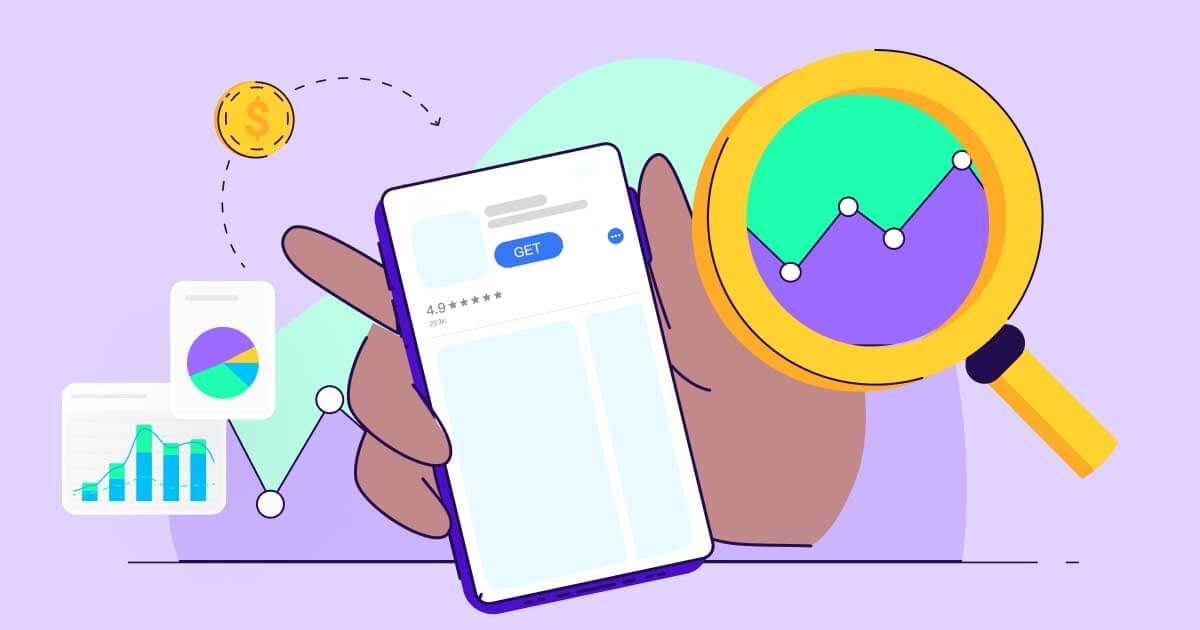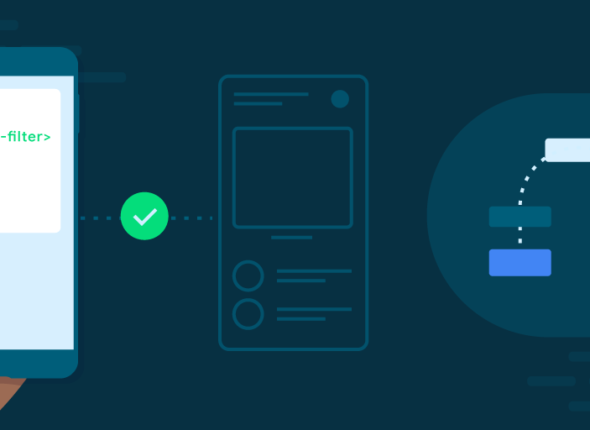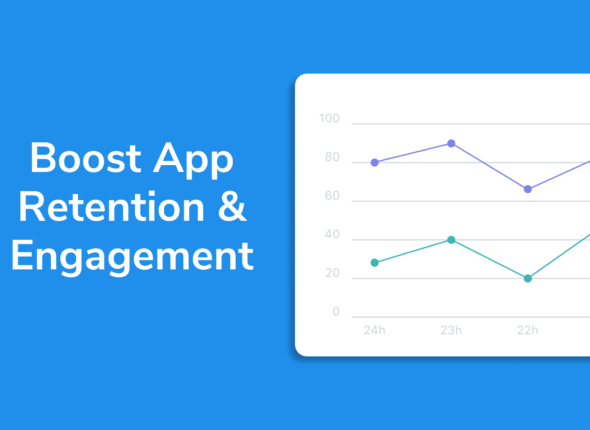In today’s highly competitive mobile app market, merely developing a great app is not enough to ensure its success. With millions of apps available on both Apple’s App Store and Google Play, standing out can be a challenge. This is where App Store Optimization (ASO) comes into play. ASO is the process of improving the visibility of your app within an app store, ultimately leading to more downloads and higher user engagement.
In this blog, we will explore the key elements of ASO, why it matters, and how to create an effective ASO strategy to boost your app’s visibility and success.
What is App Store Optimization (ASO)?
App Store Optimization (ASO) refers to the process of enhancing your app’s visibility in app stores such as the Apple App Store and Google Play Store to drive more downloads. ASO is similar to Search Engine Optimization (SEO) but specifically for mobile apps. The primary goal of ASO is to increase app discoverability through relevant keywords, improving ranking in search results, and enhancing overall visibility within the app store ecosystem.
The two main objectives of ASO are:
- Increasing the app’s visibility: Ensuring that your app appears in relevant search results and is easily discoverable by potential users.
- Boosting app downloads: Converting the visibility into actual downloads by optimizing elements that persuade users to install your app.
Why is ASO Important?

With over 4.5 million apps across the Apple App Store and Google Play, competition is fierce. Many users discover apps through search, making ASO a vital tool for increasing organic downloads. Research shows that around 70% of app store users find apps via search queries, and 65% of downloads happen directly after a search. Therefore, a well-optimized app has a significantly better chance of being found and downloaded than one that is not.
Key Benefits of ASO:
Higher Visibility: Optimizing for relevant keywords and enhancing other factors boosts your app’s ranking, making it more visible to potential users.
Cost-Effective User Acquisition: Unlike paid advertising, ASO helps drive organic traffic, which is a more sustainable and cost-effective way to acquire users.
Better Conversion Rates: By focusing on elements like app title, icon, and description, ASO can improve conversion rates, turning users who discover your app into actual downloads.
Increased App Retention: With the right optimizations, you’re more likely to attract users who find the app through relevant search queries, leading to better retention rates over time.
Key Elements of App Store Optimization (ASO)
To effectively optimize your app for better visibility, it’s important to understand the various elements that impact ASO. These elements can be broadly classified into two categories: on-metadata factors and off-metadata factors.
On-Metadata Factors
These are the elements you have direct control over within your app listing. They include:
App Title/Name
- The app title is one of the most important ASO factors. It should be clear, concise, and include relevant keywords without being spammy. Titles that are engaging and easy to remember help improve click-through rates and downloads.
Best Practices:
- Include the most important keyword in the title.
- Keep it short (25-30 characters for iOS and up to 50 characters for Android).
- Reflect the app’s core functionality or benefit.
App Subtitle (iOS)
- The subtitle appears right below the app name and provides additional context about the app’s features. This is another opportunity to integrate keywords.
Best Practices:
- Make the subtitle descriptive and keyword-rich.
- Focus on the core functionality or selling point.
App Description
- The app description should clearly explain the app’s value, features, and benefits. While it doesn’t directly affect search rankings on iOS, it can influence user conversion. On Google Play, the description is more important for ASO as Google uses it for keyword indexing.
Best Practices:
- Front-load the most important information.
- Break the content into scannable sections (bullet points, short paragraphs).
- Include a call-to-action (CTA) encouraging users to download the app.
Keywords (iOS)
- Apple allows developers to add a list of keywords (100-character limit) that describe their app. This helps the app rank in relevant searches, so choosing the right keywords is essential.
Best Practices:
- Focus on relevant, high-traffic keywords.
- Avoid repetition and use the space efficiently.
- Research competitors’ keywords to find opportunities.
App Icon
- The app icon is the first visual element users see, and it plays a critical role in grabbing their attention. A unique, high-quality, and visually appealing icon can increase conversion rates.
Best Practices:
- Keep it simple and memorable.
- Ensure the design reflects the app’s functionality.
- Test different icon designs using A/B testing tools to see which resonates better with users.
Screenshots and Preview Video
- App screenshots and preview videos give potential users a glimpse of what the app looks like and how it functions. These visuals significantly impact user decisions and can influence app download rates.
Best Practices:
- Highlight key features and the app’s value proposition in the first few screenshots.
- Use high-quality, engaging images.
- Include a preview video (up to 30 seconds) that demonstrates the app’s functionality or unique selling points.
App Category
- Choosing the right category helps users find your app more easily. It should accurately reflect the app’s main purpose.
Best Practices:
- Choose a category that is most relevant to your app’s functionality.
- If applicable, use a subcategory to increase chances of visibility in niche areas.
Off-Metadata Factors
These factors are influenced by user engagement and external marketing efforts, but they still play a crucial role in ASO.
App Ratings and Reviews
- High ratings and positive reviews are essential for ASO. Apps with better ratings tend to rank higher and attract more downloads. Both Apple and Google use user reviews as a ranking factor.
Best Practices:
- Encourage users to leave reviews through in-app prompts (but don’t overdo it).
- Address negative feedback by responding to user concerns and offering support.
- Regularly update your app to improve user experience and maintain good ratings.
Download and Install Numbers
- The number of downloads influences the app’s ranking in app stores. Apps with higher download numbers are perceived as more trustworthy and tend to rank better.
Best Practices:
- Promote your app through marketing efforts to increase initial downloads.
- Improve app performance to ensure user satisfaction and retention.
Retention Rate
- Retention rate is the percentage of users who continue using the app after download. App stores take retention into account, as it reflects user satisfaction.
Best Practices:
- Focus on providing value and improving user experience to keep users engaged.
- Use push notifications, updates, and personalized content to encourage continued usage.
Backlinks (Google Play)
- For apps on the Google Play Store, backlinks from external sites can improve your app’s ranking. These are links from blogs, websites, and other external sources that direct users to your app.
Best Practices:
- Generate backlinks through partnerships, press releases, or mentions in industry blogs.
- Promote your app on your website and other platforms.


How to Create an Effective ASO Strategy
1. Conduct Thorough Keyword Research
Keyword research is fundamental to ASO. You need to understand what terms users are searching for that are relevant to your app. Use tools like App Annie, Sensor Tower, or Google Keyword Planner to find high-traffic, low-competition keywords.
2. Optimize Your App’s Metadata
Update the app title, subtitle, and description with the most relevant keywords. Keep the content concise, keyword-rich, and user-focused. Remember that the goal is not only to rank higher but also to convert users into downloads.
3. Leverage A/B Testing
A/B testing allows you to experiment with different versions of your app’s icon, screenshots, and even descriptions to see which variations perform better. Tools like Google Play Experiments can help you test various elements and determine what drives more downloads.
4. Monitor and Respond to User Reviews
Responding to user reviews shows that you care about your users’ experience. Addressing issues promptly can help improve your app’s rating, which in turn boosts its ranking.
5. Promote Your App Outside the App Store
Boost your app’s visibility by promoting it on social media, blogs, and through partnerships. Generating buzz outside the app store can increase downloads and improve your app’s ASO performance.
Conclusion
App Store Optimization (ASO) is essential for improving the visibility and success of your app in a crowded marketplace. By optimizing on-metadata factors like app title, description, and visuals, and focusing on off-metadata factors like reviews and retention, you can significantly boost your app’s search rankings and drive more downloads. Remember that ASO is not a one-time task; it requires continuous monitoring, optimization, and testing to stay ahead of competitors and attract new users.
In a mobile-first world, investing in ASO is one of the most cost-effective ways to improve your app’s visibility, increase downloads, and achieve long-term success.
Tips for Reducing App Load Time and Memory Usage
- October 17, 2024
- Com 0
In today’s fast-paced digital world, users expect mobile apps to perform flawlessly, load quickly, and run efficiently. An app that…
Strategies to Reduce App Abandonment and Increase Retention
- October 17, 2024
- Com 0
In the highly competitive app marketplace, user retention is one of the most important metrics for measuring success. While acquiring…
Fintech App Development: Ensuring Compliance and Security
- October 16, 2024
- Com 0
The rapid growth of fintech (financial technology) apps has revolutionized the financial services industry. From mobile banking and digital wallets…
The Future of Mobile Apps in the Travel and Tourism Industry
- October 15, 2024
- Com 0
The travel and tourism industry has undergone a significant transformation in recent years, driven largely by advancements in technology. Mobile…
What Every Developer Should Know About Securing API Endpoints
- October 13, 2024
- Com 0
APIs (Application Programming Interfaces) play a critical role in modern application development, enabling communication between client applications and backend services.…
Integrating Cloud Services into Your Mobile App
- October 12, 2024
- Com 0
Cloud services have revolutionized the way modern mobile apps are developed, deployed, and maintained. Integrating cloud services into your mobile…







